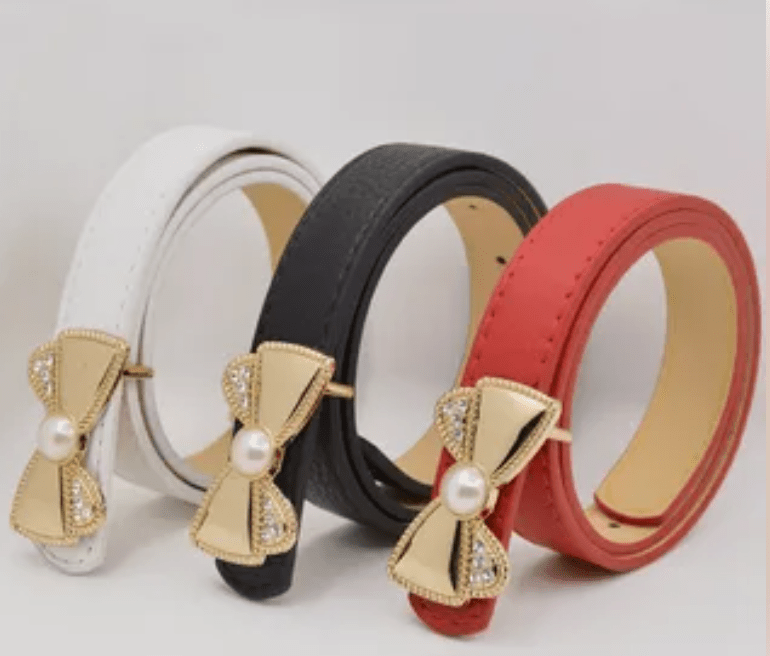
A Brief History of Belts in Fashion
When it comes to children’s fashion, belts might not be the first accessory that comes to mind. However, these small but significant additions can transform an outfit, providing both practicality and a touch of style. Whether you’re dressing up a toddler or a teenager, the right belt can make all the difference. In this comprehensive guide, we will explore the world of kids’ fashion belts, delving into their history, types, materials, and how to choose the perfect belt for your child.
In ancient times, belts were used primarily for practical purposes, such as holding weapons or tools. Over the centuries, they evolved into decorative items, reflecting social status and personal style. In the modern era, belts have become a staple in fashion for all ages, including children.
For kids, belts began as miniature versions of adult accessories, often used for formal occasions. However, as children’s fashion developed, designers started creating belts specifically for young wearers, incorporating fun designs, bright colors, and child-friendly features.
How to Choose the Right Belt for Your Child
Selecting the perfect belt for your child involves considering several factors, including the occasion, the child’s age, and their personal preferences. Here are some tips to help you make the best choice:
Consider the Occasion
The occasion will largely dictate the type of belt you need. For formal events or school uniforms, a traditional leather or faux leather belt is usually appropriate. For everyday wear, consider a fabric or elastic belt that offers comfort and flexibility.
Measure Correctly
Ensuring the belt fits properly is crucial. Measure your child’s waist while they are wearing their typical clothing to get an accurate measurement. Most belts have adjustable sizes, but it’s still important to choose a belt that fits well from the start.
Prioritize Comfort
Children are more likely to wear a belt if it is comfortable. For younger kids, opt for elastic belts that are easy to put on and adjust. For older children, consider their preferences and choose materials that are soft and flexible.
Choose Fun Designs
Kids’ belts come in a variety of designs, from simple and classic to colorful and playful. Allow your child to choose a belt that reflects their personality and interests. This not only makes the belt more enjoyable to wear but also encourages a sense of personal style.
Look for Quality
While it’s tempting to choose the cheapest option, investing in a quality belt can save money in the long run. Look for belts made from durable materials and with sturdy buckles that can withstand daily wear and tear.
Styling Tips for Kids’ Belts
Belts are not just functional; they can also be a stylish addition to any outfit. Here are some styling tips to help your child look their best:
Matching Colors
For a coordinated look, match the belt color with the shoes or other accessories. This creates a cohesive outfit and adds a touch of sophistication.
Contrast for Impact
For a more playful or trendy look, choose a belt in a contrasting color to the rest of the outfit. This can make the belt a focal point and add a pop of color.
Layering
Layering belts over dresses or tunics can create a fashionable and unique look. This is especially effective with fabric or braided belts, which add texture and interest.
Seasonal Styles
Consider the season when choosing belts. Bright and colorful belts are perfect for spring and summer, while darker, richer tones are ideal for fall and winter.
Personalized Belts
Many companies offer personalized belts with the child’s name or favorite characters. These custom belts make great gifts and add a special touch to any outfit.
Caring for Kids’ Belts
Proper care can extend the life of your child’s belts. Here are some maintenance tips for different types of belts:
Leather Belts
Keep leather belts clean and conditioned by wiping them with a damp cloth and applying leather conditioner. Avoid exposing them to excessive moisture or heat, which can cause cracking.
Elastic Belts
Elastic belts can be hand-washed or machine-washed on a gentle cycle. Lay them flat to dry to maintain their elasticity and shape.
Fabric Belts
Fabric belts are generally machine washable. Follow the care instructions on the label, and avoid high heat settings to prevent shrinkage or damage.
Synthetic Belts
Synthetic belts can be cleaned with a damp cloth and mild soap. Avoid harsh chemicals that can degrade the material.
Conclusion
Kids’ fashion belts are more than just functional accessories; they are an essential part of a child’s wardrobe that can add style, personality, and a sense of independence. By understanding the different types, materials, and styles available, you can choose the perfect belt for your child, ensuring they look great and feel comfortable. Whether for a formal occasion or everyday wear, the right belt can make all the difference in your child’s outfit, helping them to express their unique style and confidence.

